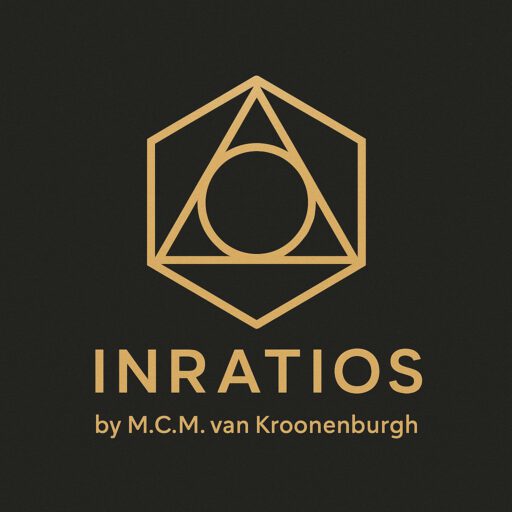Volume Without Displacement
A Cube-Based Logic for 3D Measurement
Measuring volume: from Archimedes to algorithms
How do you measure volume?
If you learned geometry in school, the answer might involve formulas:
length × width × height for boxes,
πr³ or 4/3πr³ for spheres.
All correct. All based on curves, radii, and approximations of π.
But before formulas, there was water.
Archimedes famously discovered that volume could be found by displacement:
drop an object into a full container and see how much water spills out.
No equations needed, just a physical reaction to a physical truth.
It’s a brilliant method.
And in physical reality, it works.
But in digital reality, it doesn’t.
In a simulation, a rendering engine, or a neural network,
you can’t rely on water, weight, or touch.
You need structure. You need logic.
What if we could measure volume
not by what’s pushed aside,
but by what fits inside?
That’s where GRM offers a clean, direct alternative.
And it starts with a question:
How much of a cube does a perfect sphere really fill?
Volume, without displacement or decimals
For thousands of years, volume was measured by movement.
Archimedes dropped objects into water to see how much they displaced.
It was genius. It still works.
But it doesn’t scale.
Not to digital space.
Not to systems that simulate, compare, and classify without ever touching the physical world.
You can’t pour water into the Metaverse.
But you can build structure into it.
That’s where GRM introduces something fundamentally different.
A sphere, perfectly inscribed in a cube,
always occupies exactly 0.5236 of its volume.
That’s π/6 — but in GRM, we don’t treat it as a derivation.
We treat it as a definition: 0.5236 SVU.
SVU stands for Solid Volume Unit, just like SAU for area and SPU for perimeter.
These are not just placeholders, they’re scalable logic.
If you know the ratio for one instance,
you know it for all dimensions and sizes.
Whether your cube is 1cm, 1 voxel, or 1,000 units —
the proportion holds.
And because GRM expresses this as a structure-based ratio,
it’s perfect for digital systems that need:
- Exact volumetric estimation
- Consistent scaling across resolutions
- Validation of shape containment
- Energy-efficient rendering and simulation
This makes GRM not just a geometry tool,
but a logic layer for digital environments.
From AR interfaces to Metaverse engines,
from shape-aware AI to adaptive 3D models,
GRM gives structure to space.
No displacement.
No πr³.
Just fixed ratios, applied with precision.
A framework for digital physics
In GRM, the cube isn’t just a container.
It’s a reference unit, the spatial equivalent of the square.
It defines boundaries, enables comparison, and offers something most methods can’t:
a consistent logic across dimensions.
With 0.5236 SVU as the fixed volume ratio for a perfect sphere,
we no longer need to simulate displacement.
We observe proportion.
The cube gives structure to space.
The ratio gives meaning to form.
Together, they form a new kind of physical logic, one that doesn’t leak.
In that sense, the square and the cube become more than shapes.
They become dimensional anchors, fixed forms through which every other form can be understood.
The circle and the sphere don’t just exist within them,
they inherit structure from them.
And that’s the shift GRM proposes:
from using curves as primary, to using containers as higher-order frameworks.
This isn’t just a simplification.
It’s a paradigm shift:
where digital systems move from approximating reality,
to defining it through proportion and structure.
GRM doesn’t just measure things.
It gives them context.
In this way, GRM moves from a geometric system
to something more ambitious:
a digital physics,
grounded not in mass or material,
but in proportion and structure.
And tomorrow, we use that structure to take the next step.
Because once you have a way to measure shape consistently,
you can begin to recognize it, and that changes everything.
Up next: The Shape of Meaning – How GRM Classifies Without Guessing
Stay curious.

